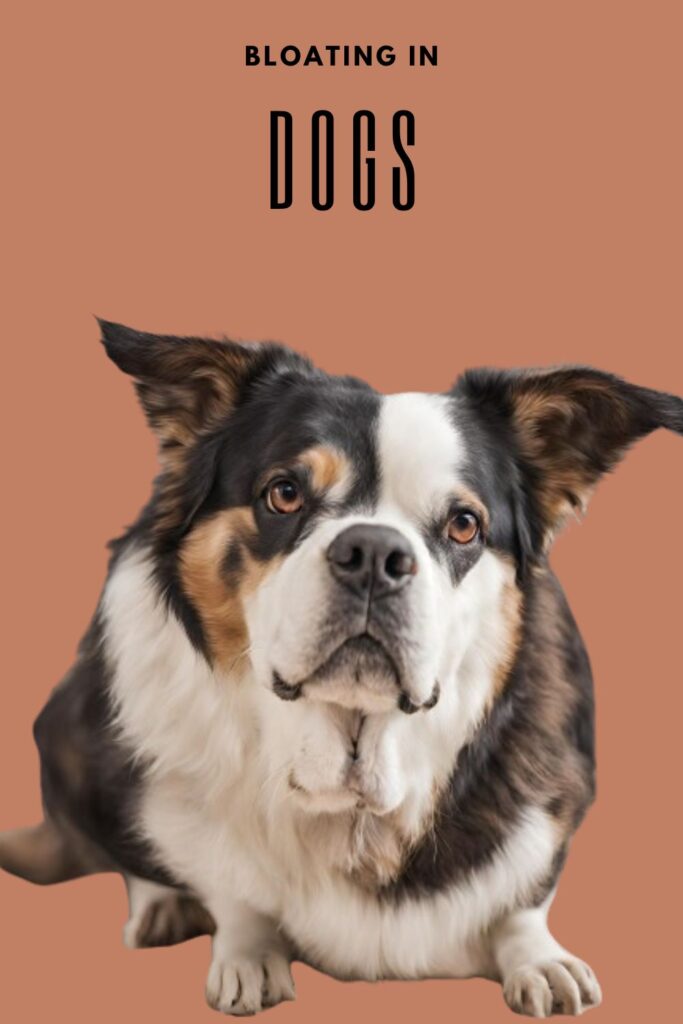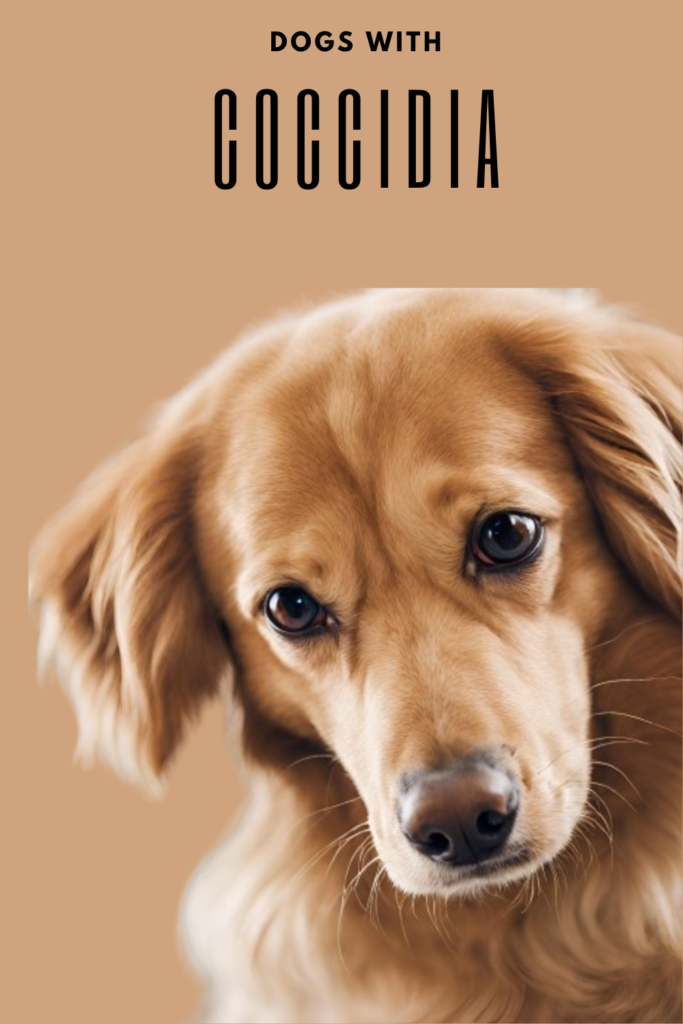Bloating in Dogs: 7 Early Signs and Medical Advice

Did you know that bloating in dogs is also known as gastric dilatation, is a life-threatening condition that affects thousands of dogs every year? It is estimated that up to 60,000 United States suffer from bloating in dogs each year, making it one of the most serious health issues faced by our canine companions.
Bloating in dogs occurs when a dog’s stomach fills up with gas or fluid, causing it to expand and put pressure on surrounding organs. This can lead to various complications, including a twisted stomach, reduced blood flow, and even organ damage.
As responsible pet owners, it is essential to be able to recognize the warning signs of bloat in dogs. Early detection and prompt veterinary intervention can greatly increase the chances of a successful outcome.
Key Takeaways:
- Bloat, or gastric dilatation, is a life-threatening condition that affects thousands of dogs every year.
- Up to 60,000 dogs in the United States suffer from bloat annually, making it a significant health issue.
- Bloat occurs when a dog’s stomach fills up with gas or fluid, causing it to expand and put pressure on surrounding organs.
- Recognizing the warning signs of bloat is crucial for early intervention and increasing the chances of a successful outcome.
- Prompt veterinary care is essential in the treatment of bloat and its complications.
Understanding Bloating in Dogs: Causes and Risk Factors
In this section, we will delve deeper into the causes and risk factors associated with bloating in dogs. Bloat, also known as gastric dilatation, is a potentially life-threatening condition that can occur in certain breeds and is influenced by various factors.
High-Risk Breeds
Certain dog breeds are more prone to developing bloat than others. These breeds include:
- Great Danes
- German Shepherds
- Saint Bernards
- Standard Poodles
- Doberman Pinschers
- Irish Wolfhounds
These breeds tend to have a deeper chest structure, which can make them more susceptible to bloat. If you own any of these breeds, it’s important to be vigilant and proactive in preventing this condition.
Other Risk Factors
Aside from breed predisposition, there are additional risk factors that can contribute to the development of bloating in dogs. Age and gender, for example, can play a role.
Older dogs are generally more at risk for bloating in dogs, as their muscles may become weaker with age. Male dogs also have a higher likelihood of developing bloat compared to females.
It’s important to note that while these factors can increase the risk, bloat can occur in any dog, regardless of breed, age, or gender. However, being aware of these risk factors can help dog owners take proactive measures to prevent the onset of bloat.
“Certain dog breeds, such as Great Danes and Doberman Pinschers, are more prone to developing bloat due to their chest structure. Age and gender can also increase a dog’s risk of bloat.”
– Dr. Sarah Richards, Canine Health Expert
| Risk Factors | High Risk Breeds |
|---|---|
| Breed Predisposition | Great Dane |
| German Shepherd | |
| Saint Bernard | |
| Standard Poodle | |
| Doberman Pinscher | |
| Irish Wolfhound | |
| Additional Risk Factors | Older Dogs |
| Male Dogs |
To better understand bloat in dogs, it is important to recognize the breeds that are more susceptible to this condition and the risk factors that can contribute to its occurrence. By being aware of these factors, dog owners can take proactive measures to prevent bloat and prioritize their pet’s well-being.
Identifying Early Signs of Bloat in Dogs
Bloat, also known as gastric dilatation, is a serious condition that can affect dogs of all breeds. Recognizing the early signs and symptoms is crucial for prompt intervention and potentially saving a dog’s life. By understanding the physical indicators, such as stomach bloat, twisted stomach, and changes in the stomach wall, dog owners can take immediate action to seek veterinary assistance and prevent further complications.
When a dog’s stomach becomes bloated, it can quickly lead to a twisted stomach, known as gastric torsion. This occurs when the stomach rotates, trapping gas and preventing blood flow to vital organs. The twisted stomach can put pressure on the diaphragm, making it difficult for the dog to breathe properly. Additionally, the stomach wall may become compromised, leading to tissue damage and potential rupture.
Dogs at higher risk for bloat include large and deep-chested breeds like Great Danes, German Shepherds, and Saint Bernards. However, bloat can also occur in smaller breeds and mixed breeds, so vigilance is essential for all dog owners.
Early signs of bloat may include:
- Restlessness or pacing
- Excessive drooling
- Unsuccessful attempts to vomit
- Swollen or distended abdomen
- Difficulty breathing
- Rapid heartbeat
- Weakness or collapse
If your dog is displaying these symptoms, it’s crucial to seek immediate veterinary attention. Time is of the essence when it comes to bloat, and early intervention can greatly improve the chances of a successful outcome.
“Recognizing the signs of bloat in dogs is a critical skill for every dog owner. By being able to identify the early symptoms, you can take swift action and potentially save your dog’s life.” – Dr. Emily Thompson, Veterinary Specialist

A close-up of a dog’s bloated belly, with visible swelling and tightness. The dog should be lying down on its side or curled up, with its head resting on its paws. The fur around the stomach should be ruffled and unkempt, giving the impression of discomfort and pain. The background should be blurred and unobtrusive, emphasizing the focal point of the image, which is the bloated stomach.
| Physical Symptoms of Bloat in Dogs | Description |
|---|---|
| Stomach Bloat | A visibly distended or swollen abdomen due to excess gas and fluid accumulation. |
| Twisted Stomach (Gastric Torsion) | The rotation of the stomach, trapping gas and preventing blood flow to vital organs. |
| Changes in Stomach Wall | The stomach wall may become compromised, leading to tissue damage and potential rupture. |
Taking Action: Preventing and Treating Bloat in Dogs
As responsible pet owners, it is crucial to take immediate action when it comes to preventing and treating bloat in dogs. By implementing proactive measures and seeking prompt veterinary care, you can safeguard your pet’s health and well-being. In this section, we will explore practical steps you can take to prevent and treat bloat in your furry friend.
Preventive Measures
One effective preventive measure for susceptible breeds is prophylactic gastropexy. This surgical procedure involves securing the stomach to the abdominal wall, reducing the risk of stomach torsion. By discussing this option with your veterinarian, you can determine if it is a suitable choice for your dog.
In addition to gastropexy, maintaining a healthy diet and exercise routine is essential for preventing bloat. Consulting with a veterinary professional will help you determine the appropriate dog food and portion sizes for your pet, ensuring optimal nutrition without overfeeding. Regular exercise and maintaining a healthy weight can also minimize the risk of bloat.
Treatment Options in Emergency Situations
In the unfortunate event that your dog experiences bloat, time is of the essence. Emergency surgery may be required to address the twisted stomach and relieve pressure. Surgical options can include decompression to release trapped gas or repairing a twisted stomach. It is crucial to seek immediate veterinary assistance in these situations to increase the chances of a successful outcome.
During emergency situations, your veterinarian may use a stomach tube to help alleviate the pressure in your dog’s stomach. This tube allows for the removal of gas and fluid, providing relief and allowing for a more stable condition.
Intravenous fluid therapy plays a crucial role in the treatment of bloat. This helps maintain hydration, stabilize blood pressure, and support overall organ function. By administering fluids directly into the bloodstream, your veterinarian can address any potential dehydration or shock that may occur.
It is important to note that treatment options may vary depending on the severity of the condition and the individual needs of your dog. Consulting with a veterinary professional will ensure the most appropriate course of action for your pet’s specific situation.
Pet Health, Diet, and Training
Proper pet health, including regular check-ups and vaccinations, can contribute to overall well-being and may help prevent health issues such as bloat. Regular visits to your veterinarian will allow for early detection of any potential problems and the prompt implementation of preventive measures.
Feeding your dog a balanced and nutritious diet is crucial for their overall health and can contribute to the prevention of bloat. Consult with your veterinarian to determine the best dog food options and portion sizes for your pet. Avoiding overeating and incorporating a slow feeding method can also help reduce the risk of bloat.
Training your dog to eat calmly and avoid excessive gulping can be beneficial in preventing bloat. Slow feeding bowls or puzzle feeders can help encourage slower eating habits, minimizing the chances of swallowing air, which can contribute to gastric dilatation and subsequent torsion.
Breeds Prone to Bloat
| Great Danes | German Shepherds | Saint Bernards | Standard Poodles | Doberman Pinschers | Irish Wolfhounds |
|---|---|---|---|---|---|
| Large and deep-chested breed | Predisposed due to their anatomy | Deep-chested breed | Predisposed due to their anatomy | Large and deep-chested breed | Deep-chested breed |
Understanding the breeds that are more susceptible to bloat can help dog owners be even more vigilant in monitoring their pets for potential symptoms and taking preventive measures.
By following these preventive measures, recognizing the early signs of bloat, and taking immediate action, you can significantly improve your pet’s chances of a successful outcome. Remember, your veterinarian is the best resource for guidance and advice when it comes to the prevention and treatment of bloat in dogs.
To read more on bloating and swelling in dogs, you should read this blog post: Dog Swollen Stomach: Discover 5 Unique Causes, Signs, and Care
Conclusion
In conclusion, recognizing the signs of bloat in dogs is paramount for every pet owner. By promptly identifying the warning signs, pet parents can take immediate action and seek veterinary assistance, potentially saving their dog’s life. Furthermore, being knowledgeable about the risk factors and implementing preventive measures can significantly reduce the likelihood of bloat in beloved pets.
It is crucial for pet parents to stay updated on the latest information regarding pet health. By following recent posts from reputable sources such as the American Kennel Club and veterinary websites, owners can access valuable insights and guidance to ensure their dog’s well-being.
Remember, being a responsible pet parent goes beyond providing regular meals and exercise. Taking proactive steps, such as considering pet insurance, is essential in safeguarding your dog’s health. In unfortunate cases of pet loss, the emotional toll can be overwhelming. By being well-informed about veterinary medicine and staying connected with support resources, pet parents can navigate through the difficult journey of coping with the loss of a beloved dog.
By understanding the connection between dog breed predisposition and bloat, pet parents can take appropriate measures to minimize the risk. Remember, the health and safety of our furry companions depend on our vigilance and care. Let’s work together to prevent devastating outcomes like gastric dilation volvulus and ensure that our dogs live happy and healthy lives.















